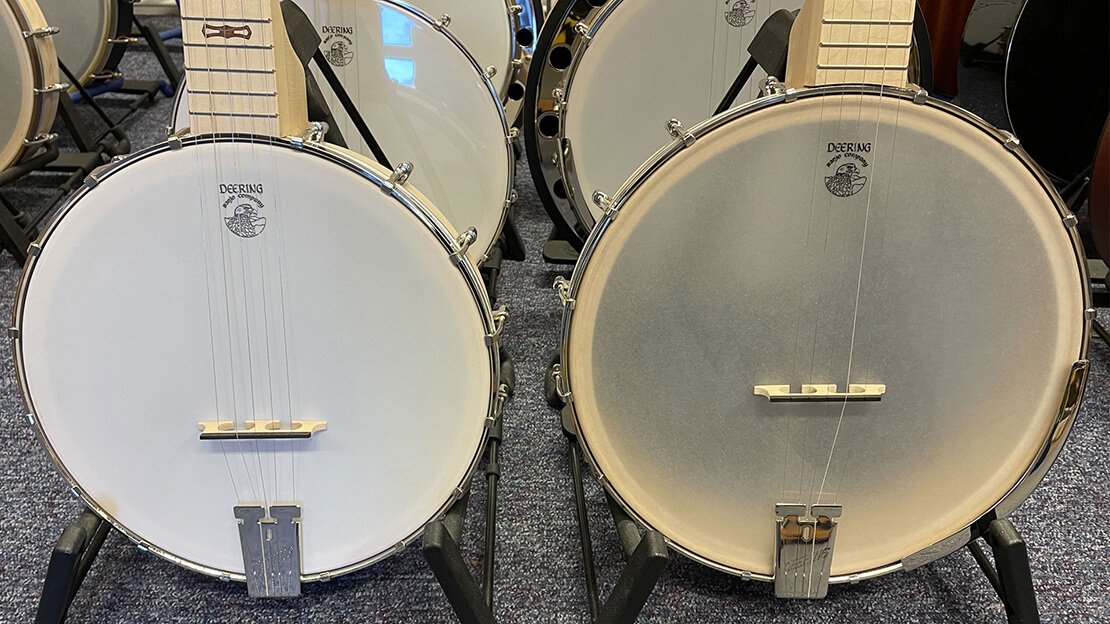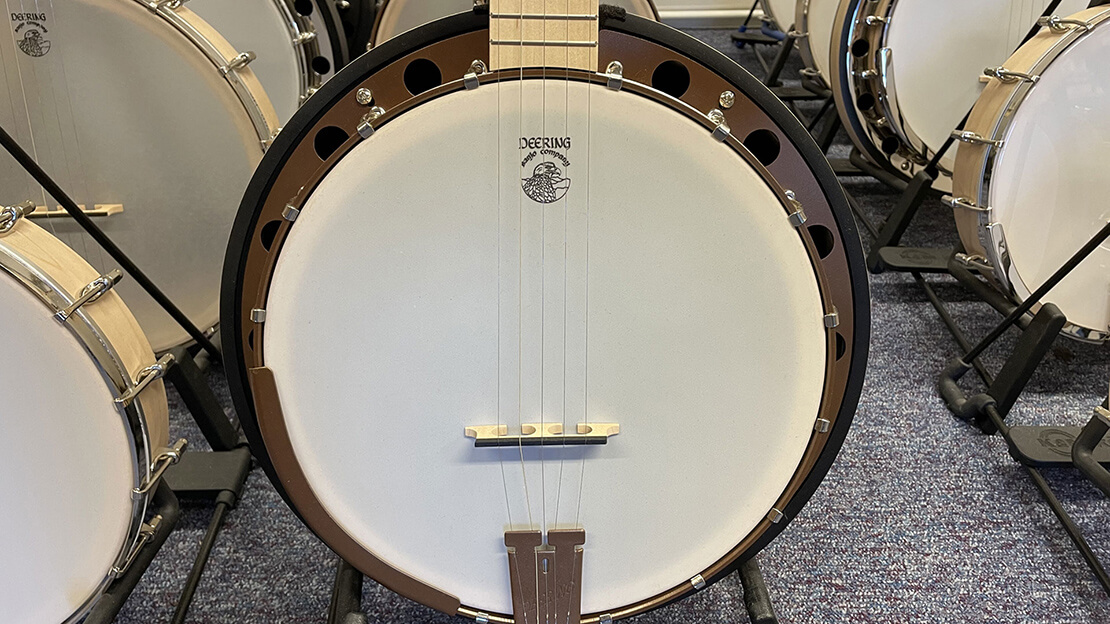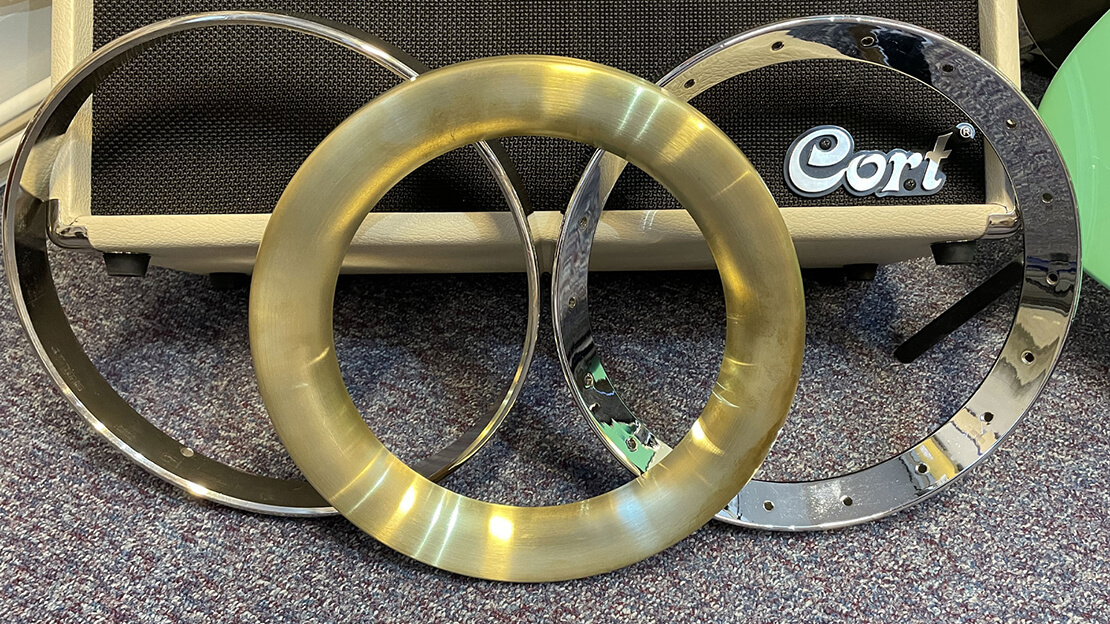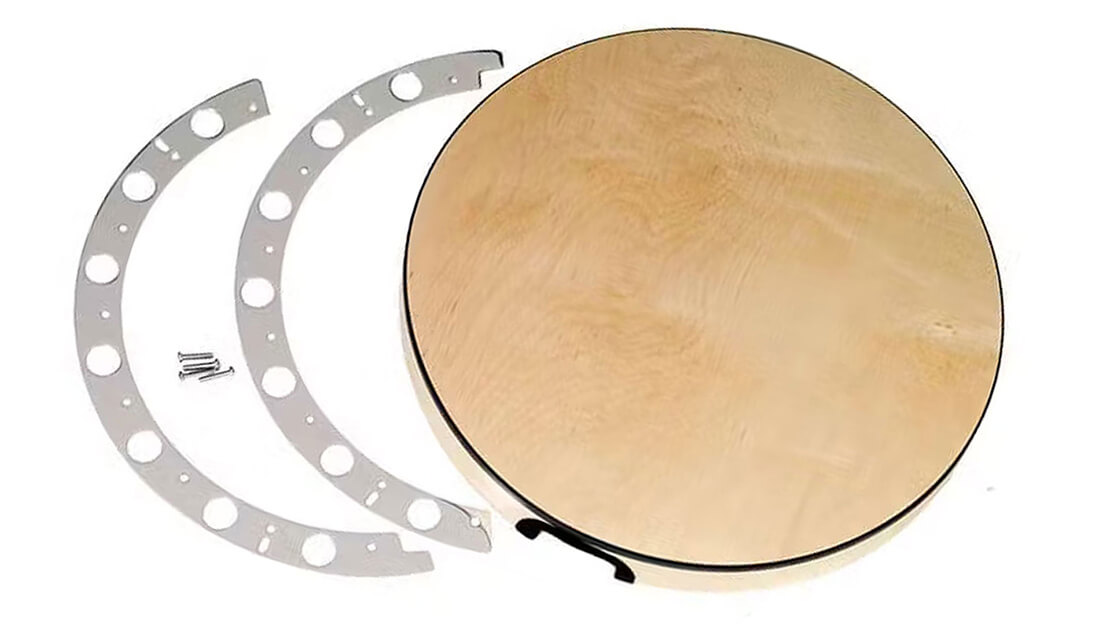
Openback vs Resonator 5 String Banjo
This is one of the big questions we get asked many times over the years particularly by beginners, so let’s answer some questions and see if we can help you make your choice. (Although the same principles apply for 4 and 6 string banjos we will concentrate on the more popular 5 string banjos for this article)
What do both words in general mean?
If we remove the fact that it’s a banjo we are referring to then we can just look at the words.
| Openback | Resonate |
|---|---|
| The back is open, simple as that! | Used to produce, increase or fill with sound by vibrating or shaking objects that are near |
In banjo terms now...
Openback Banjo
The sound that’s developed in the pot or rim of the banjo when playing has nowhere to go as it’s usually against your body so it’s trapped inside the pot and bounces around so it can be more mellow, softer, quieter and not as focused a sound than a resonator banjo.
Resonator Banjo
When you play a resonator banjo the sound developed can now escape through the holes on the edges of the resonator flange plates so the sound is forced out of the front giving you more projection and volume.
Which is the best choice for a beginner?
There is no right or wrong choice really for your first banjo, it usually comes down to your budget, what you like the look and feel of and your playing needs. Both types are suitable and once you make your choice and your playing develops you then have a better understanding of what your next banjo might be.
What are the pros and cons of each type for a beginner?
Openback

| Openback Pros | Openback Cons |
|---|---|
|
|
Resonator

| Resonator Pros | Resonator Cons |
|---|---|
|
|
What is the difference between Resonator and Closed Back?
Nothing, it’s just different terminology for exactly the same thing. Some closed back banjos don’t have a full resonator and flange but a simple disc the same diameter of the pot that is screwed to the back. It doesn’t project as much as a full resonator and in some cases can make them quieter/softer sounding. The closed back style can be seen more on some banjo ukuleles.
I like the openback style banjo but need it to be louder but don’t want a resonator model
Firstly this usually means you want to look for an open back banjo with a tone ring or a better made instrument, a tone ring is in most cases a metal ring that is pressed on to the rim. There are many types of tone rings, the most popular type is the Gibson style flathead tone ring which has been copied by most makers over the years and is usually made from bronze. Other tone rings include Tubaphone, Whyte Ladye, Spun metal, Rolled brass, and wooden. They all act like a bell and enhance the vibration of the banjo pot to give you more tone (as the name suggests), sustain (the length the note rings out for) and clarity.
Something to bear in mind though is that a tone ring can’t usually be retrofitted so to have one on a banjo usually means buying another banjo and also it can add a significant amount to the overall weight of the banjo.
Secondly a quality openback banjo can sometimes be a better sound than a lesser quality resonator model.
Do I need a tone ring as a beginner?

Not really no, it’s not absolutely necessary. It just depends on your needs. If you already play other instruments and have a more developed ear then the tone ring is something that you wouldn’t need to upgrade to as soon.
Also If you have a bit more of a budget and want to miss out a couple of steps and go for a tone ring in either an openback or resonator model then that is also fine.
What is a Bluegrass banjo?
This usually refers to a 5 string resonator banjo, although the term bluegrass music can refer to all types of American roots music which developed from old time music developed in the 1940’s from the Appalachian Mountain region of the United States. Bluegrass music and its genre derived from Bill Monroe and the Blue Grass Boys and then later by banjo God Earl Scruggs. Earl is credited with inventing and then popularizing the three finger picking style that most players use when playing a resonator banjo and want to play Bluegrass Music.
I want to play Clawhammer or old time/mountain music, which is the best choice?
Simple, an openback banjo. The nature of playing that kind of music is you aren’t usually competing with lots of other instruments, certainly not electric guitars, drums or keyboards so a softer mellower tone is preferred. In more recent times the 12” pot has become very popular for its deeper tone and great for singing along to. It’s not as bright a sound as the 11”.
What’s the difference between an 11” and 12” openback?
The 12” pot has a slightly different bridge position, it sits a bit close to the centre of the banjo head.
Imagine hitting a drum in the middle of the head and then hitting it a bit closer to the edge. The sound nearer to the middle will be a little bit softer where the skin is slightly looser than more towards the edge of the drum where it’s tighter, the head sags more in the middle producing that slightly softer sound. The same applies to a banjo bridge and its position.
If you're singing along to the banjo then a 12” pot can complement your voice a bit more.
What is a resonator made of?
They are usually made from similar materials to the rest of your banjo. Maple, mahogany and walnut are popular choices. Some are all solid on more expensive models and some are made up with layers of ply and laminates with an external veneer which can be stained and also finished off in satin or gloss.
Can you remove a resonator and turn your banjo into an openback?
Yes it’s possible, on some banjos like the Deering Goodtimes it’s made to be able to do that, others will require some modifications to the banjo for it to be able to be set up properly again.
If the flange plates (which can be one, two or 4 small individual plates) can be removed and the hooks and nuts will stay in place then yes it’s possible.
How easy a job is it?
It always depends on how handy you are. It’s just nuts and bolts but the main thing is to be able to do some basic setup and adjustment work on the banjo when you loosen or remove parts, if you’re comfortable with that then yes it’s doable. We can advise you if its possible on any banjo
Can you add a resonator to an openback banjo?

Yes you can in some circumstances, it depends on how the openback banjo pot is made. The only resonator that is readily available is for the 11”.
Goodtimes in the form of a Deering Goodtime Resonator Conversion Kit which can be added to 11” Goodtimes across the range, there is a separate one for the darker stained Deering Goodtime Artisan models - One thing to note is they do not fit 12” Americana models though.
Which banjos do Eagle Music recommend for a beginner?
Ozark, Tanglewood and Gold Tone have some good beginner models but the American made Deering Goodtime models are the best made.
Eagle Music have created some beginner banjo packs that have pre selected all the accessories you will need to start playing.
Shop 5 string banjo beginner packs
To summarize, you can play any type of music not just Bluegrass or Old Time music on an openback or resonator banjo, it’s all about choice.
If in doubt, do what some do and buy one of each!
Thanks for reading
Matt
